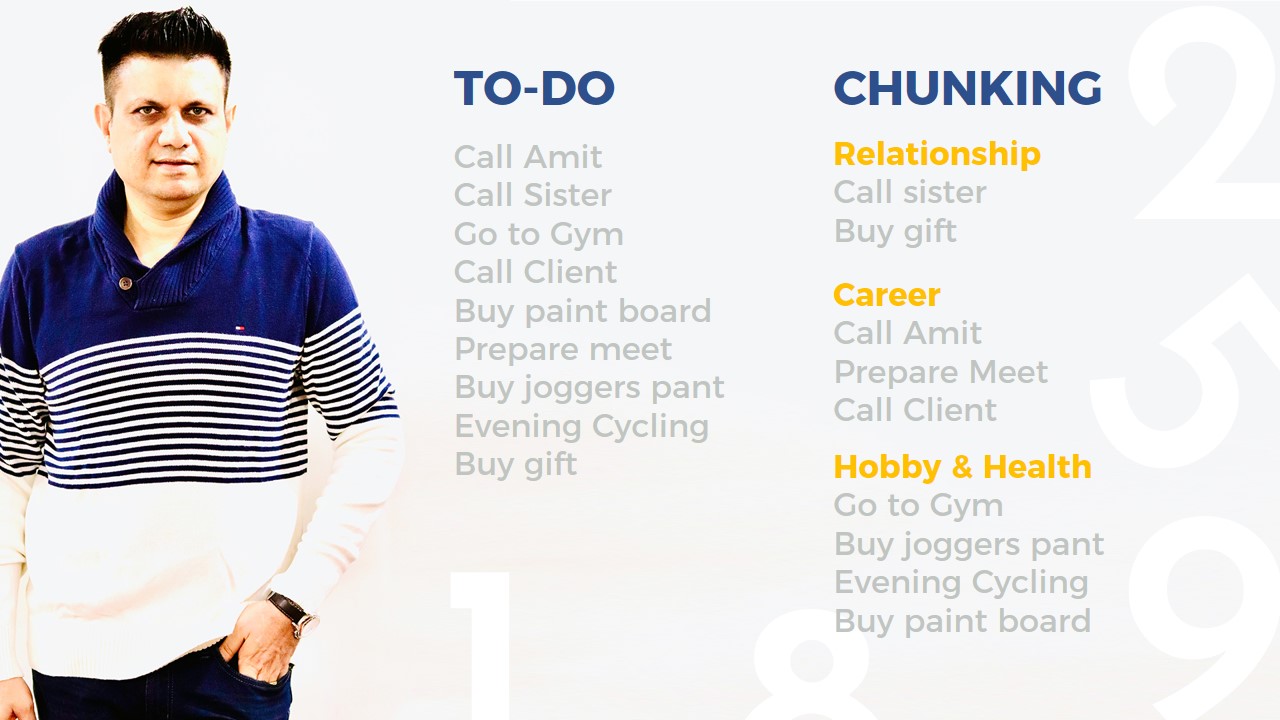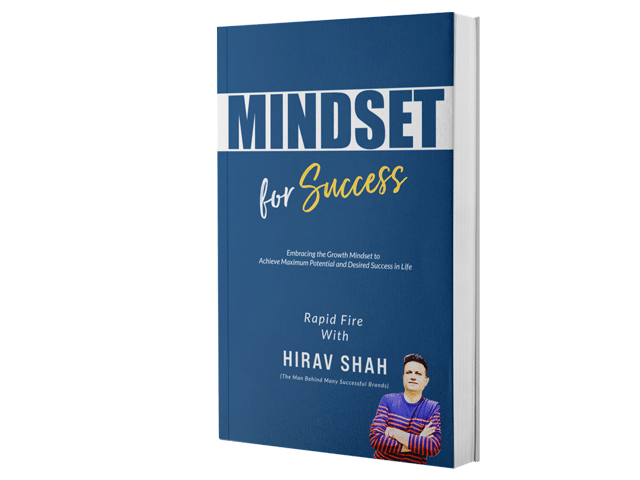“Life occurs while we are making different arrangements.” This idiom speaks volumes about the unpredictable nature of life, yet it also highlights the importance of having a clear plan. After all, an objective without a strategy is simply a wish. Without a solid plan in place, the boundary between thought and execution becomes blurry, making it harder to follow a clear path toward your goals. Whether you’re juggling a heavy workload, trying to build a new habit, or finding more time for leisure, learning how to plan your day effectively is essential for maintaining control and making meaningful progress.
Business Strategist Hirav Shah, a noted expert in effective planning and goal achievement, stresses that time management is at the core of personal and professional success. In his view, time management isn’t just about organizing tasks—it’s about setting meaningful goals and aligning your time and energy with your long-term vision. Here’s how you can improve your day-to-day planning and start making progress toward your bigger goals.
Table of Contents
How to Plan Your Day: A Practical Guide
Effective time management isn’t about just crossing off items from your to-do list—it’s about directing your time and energy toward results that matter. Here’s a structured way to plan your day with the right tools and mindset.
1. Plan the Night Before
When you plan your day the night before, you’re setting yourself up for success before your energy and focus start getting depleted. The key here is to avoid the mental effort of planning your day first thing in the morning. Instead, take a few minutes in the evening to organize your thoughts and map out the tasks for the following day. This pre-planning will mentally prepare you so you can hit the ground running when you wake up.
For example, let’s say you’re a business strategist juggling multiple client projects. Before you go to bed, review your agenda, identify the critical tasks for the day ahead, and prioritize them. This will save you time and mental energy the following day, allowing you to focus on execution.
2. Write It Down Before You Turn on the Computer
In our digital age, it’s tempting to dive straight into emails or social media the moment you wake up. However, one of the most effective ways to plan your day is to resist the temptation of technology at first. Instead, grab a pen and paper and outline your goals for the day.
Start by identifying what success would look like by the end of the day. Write down the specific steps needed to achieve those results. By taking a break from the digital noise, you’ll find it easier to concentrate on your most important tasks.
For instance, if you’re planning a marketing strategy for a new product, you might write down tasks such as “research competitor strategies,” “finalize content calendar,” or “schedule brainstorming session with the team.”
3. Embrace Rituals

Consistency is key when it comes to planning and time management. Embracing a daily ritual—whether it’s a morning routine or an evening wind-down—can help solidify positive habits that improve your productivity. By creating these rituals, you’ll stay on track and develop a routine that aligns with your goals.
For example, as a business strategist, you might include a ritual of reviewing client reports every morning for 15 minutes before diving into the day’s meetings. This consistent practice will improve your efficiency and keep you aligned with your overall strategy.
4. Leverage Time-Management Tools
Many time management frameworks focus solely on the tasks at hand, but a more holistic approach is necessary for achieving long-term success. The RPM (Rapid Planning Method) Life Planner is one such tool that provides both short-term and long-term planning techniques. With the RPM system, you focus not just on completing tasks, but on achieving your most meaningful life goals.
For example, if your goal is to increase your revenue by 25% this year, you would break that down into smaller actionable steps, such as “identify new sales channels” or “optimize customer retention.” Using a planner that includes long-term vision helps ensure that your daily tasks align with your overarching goals.
5. Use the ‘Chunking’ Technique
When you’re feeling overwhelmed by a heavy workload, breaking down tasks into manageable chunks can help you focus. The “chunking” technique, a key component of the RPM method, involves grouping similar tasks together. This makes large projects feel less intimidating and helps you stay focused.
For instance, if you’re preparing for a big business presentation, chunk the process into smaller tasks: “design slides,” “write speaker notes,” “rehearse presentation,” etc. This makes it easier to track progress and prevents overwhelm.
6. Don’t Be Afraid of Lists
Lists are a great way to stay organized and reduce stress. When planning your day, create a list of key tasks, and keep it updated as your priorities shift. While a daily agenda might seem rigid, it’s a great way to ensure that nothing slips through the cracks. Writing your goals down helps you focus on what really matters.
For example, you might create a list of items like:
- Call back potential clients
- Complete marketing content for next quarter
- Review and approve budget allocations
Breaking down your day into these bite-sized tasks makes them easier to handle and provides a sense of accomplishment as you check them off.
7. Set Realistic Time Limits
One of the biggest time-wasters is working on a task indefinitely without a clear endpoint. To avoid this, give yourself a set window of time to complete each task. This technique, called “time boxing,” encourages focus and helps prevent procrastination.
For example, if you’re working on a business strategy plan, set a time limit of 90 minutes to research market trends, and then move on to the next task. This boundary will keep you productive without over-analyzing or getting stuck in perfectionism.
8. Schedule Everything—Including Self-Care
It’s easy to skip self-care when you’re busy with work, but neglecting your physical and mental well-being can lead to burnout. To maintain your energy levels, schedule time for exercise, meals, and relaxation just like you would any work task.
For example, if you’re a business strategist managing a growing team, you might schedule “team meetings” from 9-11 AM, but also schedule “15-minute morning meditation” at 7:30 AM and “30-minute walk” at lunch to recharge.
9. Regroup Every Hour
It’s important to take regular breaks to refresh your mind and body. Set a timer to check in with yourself every hour. During these mini breaks, stand up, stretch, and assess whether your current activities are bringing you closer to your goals.
For example, if you’ve been working on client proposals for 60 minutes, take a break to reflect on the next step. Was this hour productive? If not, adjust your plan for the next block of time.
Frequently Asked Questions (FAQs)
Q: How can I prioritize tasks effectively?
A: Start by identifying the tasks that align with your long-term goals. Use techniques like the Eisenhower Matrix to distinguish between urgent and important tasks, and focus on those that will contribute most to your success.
Q: How do I stay motivated to stick to my plan?
A: Motivation comes from seeing progress. Break your tasks into small, achievable chunks, and celebrate small victories along the way. Consistency is key, so keep building momentum daily.
Q: How can I reduce distractions while working?
A: Block off certain hours for focused work, use apps like “Focus Timer” to stay on track, and minimize digital distractions by putting your phone on “Do Not Disturb” mode.
Conclusion
In conclusion, staying organized and planning your day effectively is a skill that can drastically improve your productivity and overall well-being. As Business Strategist Hirav Shah emphasizes, proper time management is about aligning your daily tasks with your larger goals. Whether you’re a busy professional or someone trying to balance work and personal life, the strategies outlined here can help you organize your day and achieve lasting success. Remember, it all starts with a plan—and with a little practice, your time management will become second nature.




















